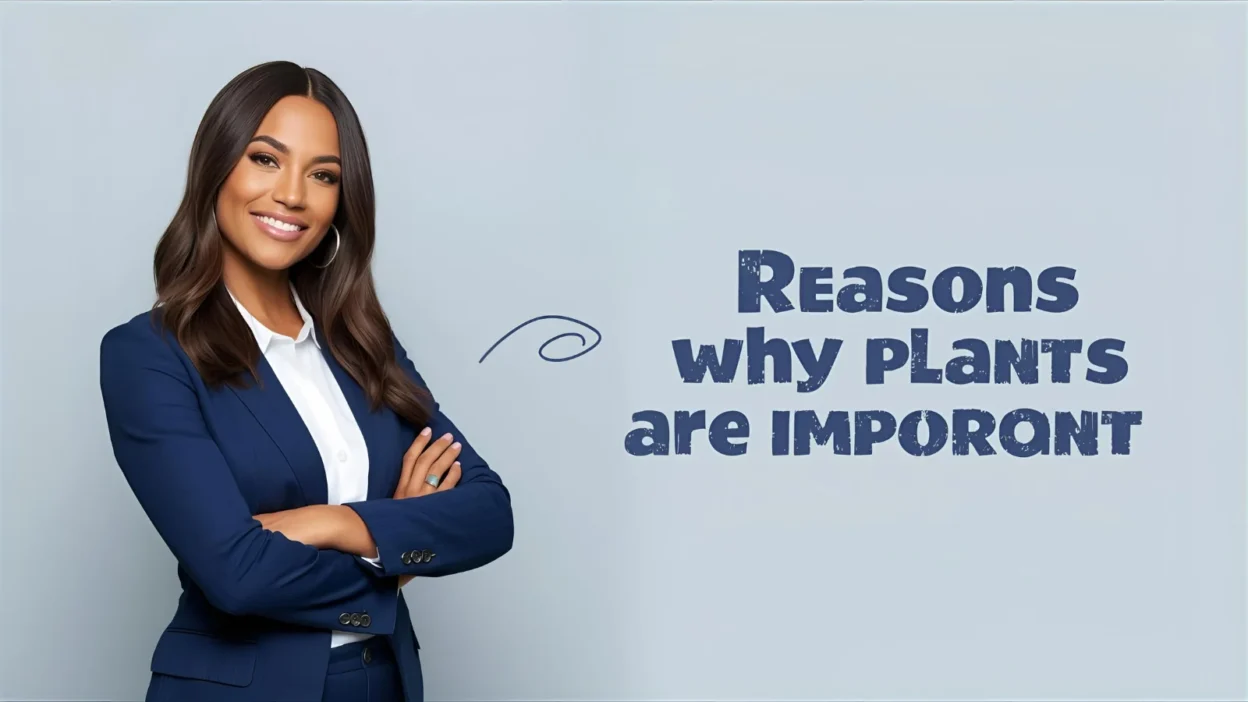Plants are everywhere—whether it’s the tree outside your window, the vegetables on your plate, or the flowers that brighten your day. Yet, most people don’t realize just how deeply plants influence every aspect of life. From providing oxygen to supporting entire ecosystems, plants are the foundation of survival on Earth.
In this guide, we’ll explore the reasons why plants are important, covering health, environment, economy, culture, and even language.
Understanding the Importance of Plants
Plants are living organisms that use photosynthesis to convert sunlight, carbon dioxide, and water into energy. In doing so, they produce oxygen—a gas essential for human and animal life.
But their role doesn’t stop there. Plants provide food, shelter, medicine, and emotional well-being. Without them, life on Earth would collapse.
Plants as Oxygen Providers
- Through photosynthesis, plants release oxygen into the atmosphere.
- One mature tree can supply enough oxygen for two people every year.
- Forests are often called the “lungs of the Earth.”
👉 Without plants, humans and animals wouldn’t be able to breathe or survive.
Plants as a Source of Food
- Fruits, vegetables, grains, and nuts all come from plants.
- They form the base of the food chain for animals and humans.
- Even meat and dairy indirectly depend on plants, since animals eat them.
🌾 Example: Rice, wheat, and maize—three plants—feed more than half of the world’s population.
Plants and Medicine
- Many medicines are derived from plants—like aspirin (from willow bark) and quinine (from cinchona tree).
- Herbal medicine has been practiced for thousands of years.
- Even modern pharmaceutical companies rely on plants for research and raw materials.
🌿 A single rainforest plant may hold the cure for diseases not yet discovered.
Plants and Environmental Balance
- Plants absorb carbon dioxide, reducing greenhouse gases.
- Roots prevent soil erosion.
- Forests and wetlands regulate the water cycle.
- Plants provide shade, moderate temperatures, and maintain local climates.
🌍 In short, plants are natural climate protectors.
Plants and Economic Value
- Agriculture, forestry, and horticulture are billion-dollar industries.
- Plants create jobs for farmers, gardeners, loggers, and herbalists.
- Global trade in plant-based goods (coffee, tea, cotton, wood) drives economies.
💡 Example: The coffee industry alone supports over 125 million people worldwide.
Plants in Culture and Symbolism
Plants aren’t just practical—they’re symbolic too:
- Roses symbolize love.
- Olive branches represent peace.
- Lotus flowers stand for purity in many religions.
🌸 Cultures across the world use plants in rituals, celebrations, and traditions.
Types of Plants and Their Roles
- Trees – provide oxygen, timber, and shade.
- Herbs – used in cooking and medicine.
- Shrubs – add beauty and protection.
- Crops – essential for food and textiles.
- Flowers – provide pollination and emotional comfort.
Common Idioms About Plants
- “Nip it in the bud” – stop something before it grows.
- “Go to seed” – fall into decline.
- “Put down roots” – settle in a place.
- “Bloom where you are planted” – make the best of your situation.
- “Money doesn’t grow on trees” – resources are limited.
Synonyms for Plants
| Synonym | Example Usage |
|---|---|
| Flora | The island is home to unique flora. |
| Vegetation | Thick vegetation covered the forest floor. |
| Greenery | The park’s greenery refreshed the visitors. |
| Foliage | Autumn foliage turned red and gold. |
| Botany (field) | She studied botany at university. |
Grammar Note: Plant in Use
- Verb – They plant trees every spring.
- Noun – The plant grew quickly in sunlight.
- Plural – Plants provide food and oxygen for all life.
Challenges to Plant Life
- Deforestation – millions of trees cut down annually.
- Climate change – threatens plant survival worldwide.
- Urbanization – reduces green cover in cities.
- Overharvesting – puts medicinal and rare plants at risk.
⚡ Solution: Reforestation, sustainable farming, and conservation programs can protect plant life for future generations.
The Future of Plants and Sustainability
- Urban gardens and rooftop farming are growing trends.
- Scientists are studying plants for biofuels and renewable energy.
- Plant-based diets are rising in popularity for health and environment.
- Genetic research may create disease-resistant crops.
🚀 The future of human life is tied directly to the future of plants.
FAQs About Plants
Q1: Why are plants important for humans?
They provide oxygen, food, medicine, and materials for survival.
Q2: Can we live without plants?
No—without plants, oxygen and food chains would collapse.
Q3: How do plants help the environment?
They absorb CO₂, regulate climate, and prevent soil erosion.
Q4: Why are forests called the lungs of Earth?
Because they produce most of the world’s oxygen.
Q5: What role do plants play in mental health?
Green spaces reduce stress, boost mood, and promote well-being.
Conclusion
Plants are not just background scenery—they’re the foundation of life. They give us oxygen, food, medicine, and beauty. They protect the environment, fuel economies, and inspire cultures.
The strongest reason why plants are important? Because every breath we take and every meal we eat depends on them.



